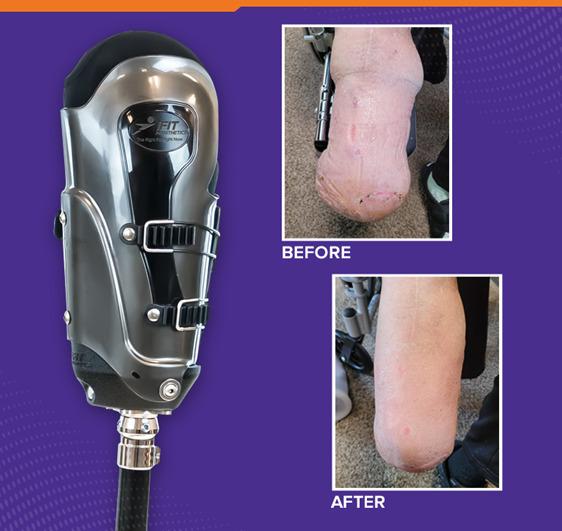Introduction:
The world of prosthetic limb technology has witnessed remarkable innovations, particularly in the development of transfemoral sockets. These advanced socket designs are transforming the lives of individuals with above-knee amputations, offering improved comfort, stability, and mobility. In this article, we will explore the significance of transfemoral socket technology, the advancements in this field, and how these innovations are empowering amputees.
Understanding the Transfemoral Socket:
A transfemoral socket is a crucial component of a prosthetic limb for individuals who have undergone above-knee amputations. This socket serves as the interface between the residual limb and the prosthetic limb, affecting an amputee's comfort, stability, and overall experience.
Advancements in Transfemoral Sockets
In recent years, there have been significant advancements in the design and technology of transfemoral sockets:
Socket Comfort: Traditional transfemoral sockets often caused discomfort and pressure sores due to their rigid construction. Modern designs prioritize comfort through ergonomic shapes and the use of flexible, breathable materials that adapt to the residual limb's contours.
Socket Suspension: Ensuring that the prosthetic limb remains securely in place is crucial for an amputee's confidence and mobility. Innovative socket suspension systems, such as vacuum-assisted and silicone liners, provide improved stability, reducing the risk of slipping or discomfort during movement.
Reduced Weight: The use of lightweight materials, such as carbon fiber and advanced composites, has become prevalent in the construction of transfemoral sockets. This not only reduces the overall weight of the prosthesis but also improves energy efficiency during walking and other activities.
Customization: Modern transfemoral sockets can be highly customized to meet the specific needs and preferences of the user. This customization ensures a better fit and increased satisfaction.
The Benefits of Advanced Transfemoral Sockets:
Enhanced Mobility: The innovative socket designs offer users a more natural, comfortable, and stable gait, enabling them to participate in various physical activities and regain their independence.
Improved Quality of Life: Reduced discomfort and the increased ability to perform daily tasks contribute to a higher quality of life for prosthesis wearers. They experience greater self-confidence and psychological well-being.
Greater Independence: The advanced socket designs enable amputees to regain their independence and engage in activities they may have once thought were unattainable.
Adaptability: Modern transfemoral socket are designed to adapt to changes in the residual limb, ensuring an enduring and comfortable fit over time.
Conclusion:
Transfemoral sockets have undergone a remarkable transformation, redefining the standards of prosthetic limb technology. These innovative designs offer a comfortable, stable, and adaptable interface between the residual limb and the prosthetic limb. As a result, individuals with above-knee amputations can enjoy enhanced mobility, improved quality of life, and greater independence. The advancements in transfemoral socket technology promise a future where these individuals can experience even higher levels of comfort and mobility, ultimately redefining what is possible with a prosthetic limb.
